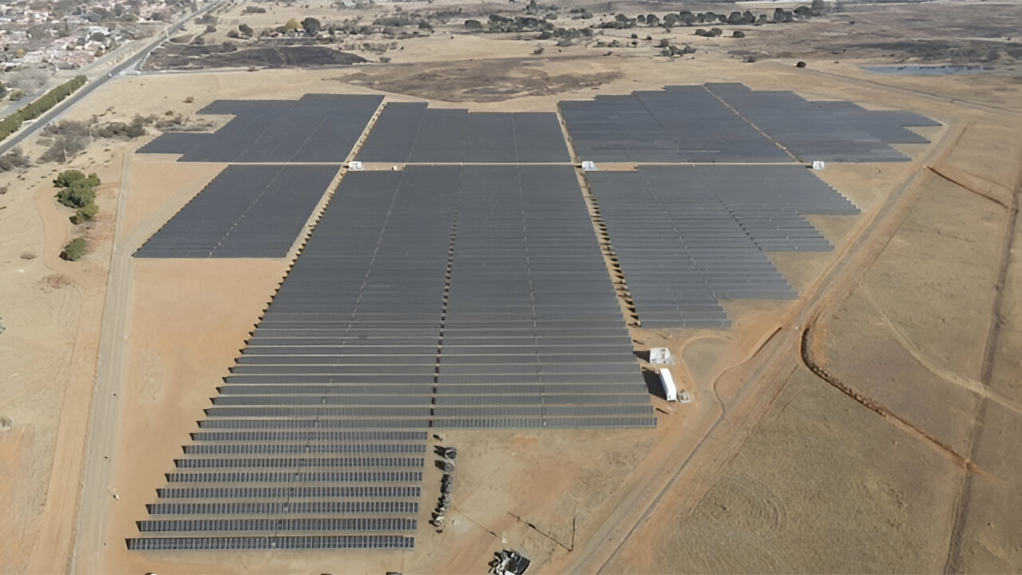As the mining industry continues its journey towards sustainability and operational efficiency, the role of innovative energy solutions cannot be overstated, reports renewable-energy specialist Energy Group director Tim Hill, who adds that with advancements in technology, supportive regulatory frameworks and a commitment to innovation, mining companies are well-positioned to enhance their energy efficiency, reduce their carbon footprint and lower energy costs.
He anticipates a significant increase in the adoption of renewable-energy technologies over the next five years, and predicts that by 2029, energy supply from renewable sources will be a standard practice among mining companies, with many projects currently under development moving to full operation.
This shift will increase the range of contracting options open to mining companies as well as simplifying the renewable energy procurement process in the future, believes Hill.
The push for innovation in mining energy solutions is driven by several critical factors, with Hill identifying costs, decarbonisation strategies and regulatory changes as the primary drivers for such strategic decisions.
In South Africa, specifically, Hill notes that regulatory changes have spurred the private sector to develop diverse energy solutions designed for the mining industry and its unique requirements, citing the removal of the self-generation licensing cap in South Africa as a pivotal change that has unlocked significant renewable-energy potential and interest.
“Policy certainty and consistent messaging from regulatory bodies are essential for providing long-term visibility and confidence to the industry,” avers Hill.
Brass Tacks
Integrating renewable-energy sources into mining operations presents several challenges, such as navigating the cyclical nature of the industry, when developing contracting strategies.
Hill highlights the importance of addressing permitting and technical requirements during the development phase of a self-generation power project, managing supply chains and contractor interfaces during construction, and optimising performance through skilled operational, maintenance and asset management teams.
In addition, the volatility of commodity prices necessitates a flexible approach, balancing the financial benefits of long-term contracts and the increased flexibility of contracting on a short-term basis, he points out.
The integration of digital technology and data analytics is further transforming energy management in mining operations, he adds, noting that sophisticated modelling and analytics are essential for understanding current and future load profiles, evaluating different energy technologies, and making better-informed decisions in the context of a tariff environment that is evolving rapidly.
“As the energy market becomes more decentralised and diverse, the role of data analytics in optimising energy solutions will only grow in significance, and tailored energy solutions, such as on-site generation and advanced storage technologies, are key to realising these objectives,” states Hill.
He also challenges the common notion that there has to be a trade-off between cost-effective energy solutions and sustainability goals, arguing instead that renewable-energy projects typically offer both sustainability benefits and significant cost reductions.
Energy storage solutions, particularly battery storage, are crucial to unlock the next phase of renewable-energy adoption for mining operations, notes Hill, adding that the decreasing costs of battery storage technology has made the solutions a viable option for increasing renewable-energy penetration, and pointing out that this technology not only supports the decarbonisation of the energy sector, but also enhances energy security for mining companies.
The Energy Group has a long history of collaborating with mining companies in South Africa, contributing to significant operational improvements.
The company has worked with Harmony Gold Mining Company – on South Africa’s first private power purchase agreement (PPA), and Sibanye-Stillwater – on renewable-energy projects totalling over 500 MW.
More recently, Energy Group is undertaking work on the largest behind-the-meter solar PV project developed for private offtake, which marks a significant milestone in South Africa’s renewable-energy landscape.
The first phase of this project – a 97.35 MW plant, in Limpopo – will generate more than 220 GWh of energy, yearly.
Edited by: Donna Slater
Features Deputy Editor and Chief Photographer
EMAIL THIS ARTICLE SAVE THIS ARTICLE
ARTICLE ENQUIRY
To subscribe email subscriptions@creamermedia.co.za or click here
To advertise email advertising@creamermedia.co.za or click here















